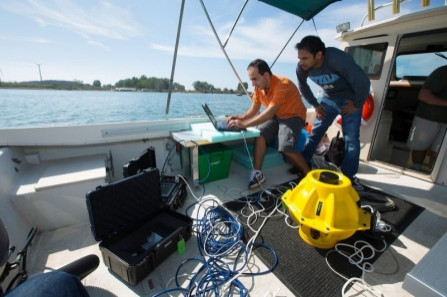The Internet, The Ocean And The Future Of Wireless Computing

Researchers at the New York state's University of Buffalo are developing an underwater wireless computer network, and the possible applications seem as endless as the ocean itself.
To name a few, a deep-sea Internet could improve tsunami detection, pollution monitoring, offshore oil and gas exploration and surveillance for crimes like drug trafficking.
“A submerged wireless network will give us an unprecedented ability to collect and analyze data from our oceans in real time," said Tommaso Melodia, UB associate professor of electrical engineering and the project’s lead researcher. “Making this information available to anyone with a smartphone or computer, especially when a tsunami or other type of disaster occurs, could help save lives.”
Land-based wireless networks rely on radio waves that transmit data through the air to satellites and antennae. Since radio waves transmit poorly underwater, agencies like the U.S. Navy use different sound wave-based techniques to communicate underwater.
For example, existing tsunami sensors on the bottom of the sea can send data in acoustic waves to buoys on the surface, and the buoys can convert the acoustic waves to radio waves. When the radio waves reach a satellite, the satellite redirects the radio waves and the original data to land-based computers.
Data systems worldwide use the same basic idea, but sharing data between them is difficult because different systems employ different infrastructures. Melodia and his team's project, a collaborative effort of UB researchers and funded by the National Science Foundation, would connect existing and planned underwater sensors to smartphones, laptops and other wireless devices in real time.
This technology could link networks of buoys and tsunami sensors and deliver immediate, more reliable warnings directly to coastal residents, increasing the odds that they could evacuate. It would also encourage collaboration among oceanographers and energy industry researchers, eliminating duplicative deployments of sensors and allowing a vaster sensing network. More sensors could also help law enforcement and the military track drug smugglers, who have recently used submarines to traffic drugs long-distances.
"We could even use it to monitor fish and marine mammals, and find out how to best protect them from shipping traffic and other dangers," Melodia said. "An Internet underwater has so many possibilities."
© Copyright IBTimes 2024. All rights reserved.





















